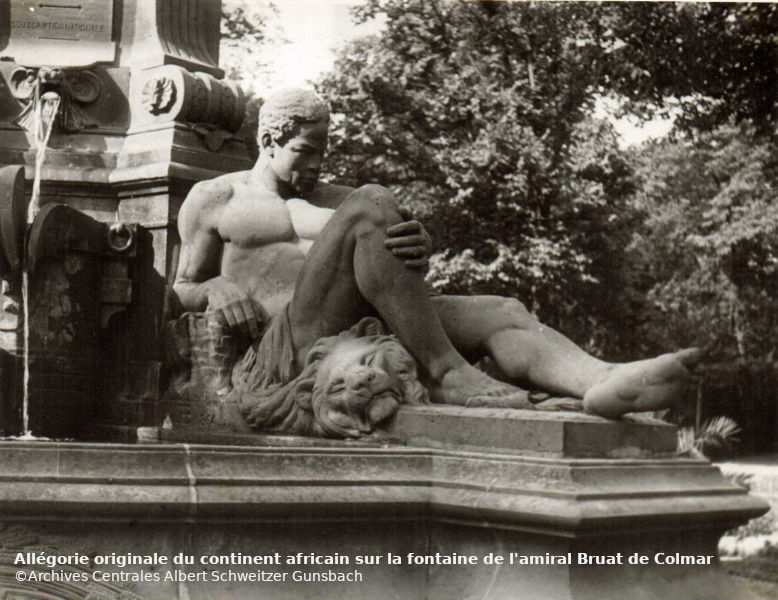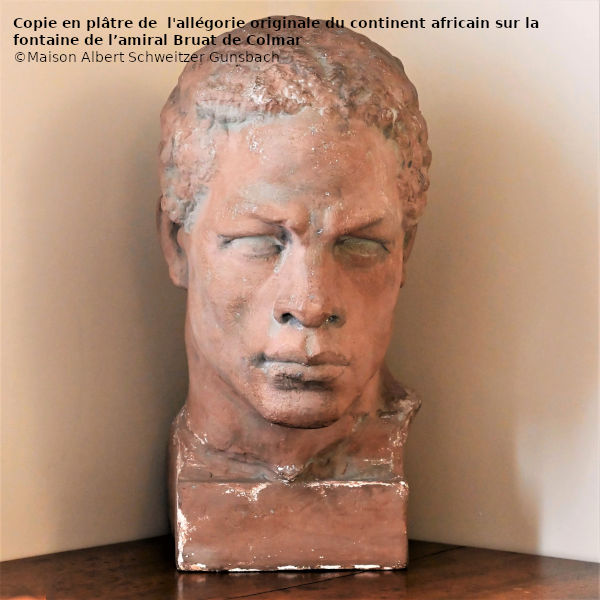The inspiration for his humanitarian vocation
By his own admission, it was the work of the sculptor Bartholdi on the Admiral Bruat Fountain in Colmar that led Dr. Albert Schweitzer to his humanitarian vocation.
He was still a child when he discovered the monument during a family outing. The allegory of the African continent made a strong impression on him:

He carved in stone a black man who is one of the most moving creations of his chisel: a herculean figure with a sad and meditative face. I was very concerned about this black man. Every time we went to Colmar, I looked for an opportunity to contemplate him. His forehead spoke to me of the sufferings of the African continent.
Memoirs of Childhood and Youth, 1924

Largely destroyed by the Germans in 1940, it is a more modern monument that you can now see on the Champs-de-Mars. The original stone heads that were saved are now kept in the Bartholdi Museum in Colmar.
This plaster copy lies next to Dr. Schweitzer’s work table in his house in Gunsbach.